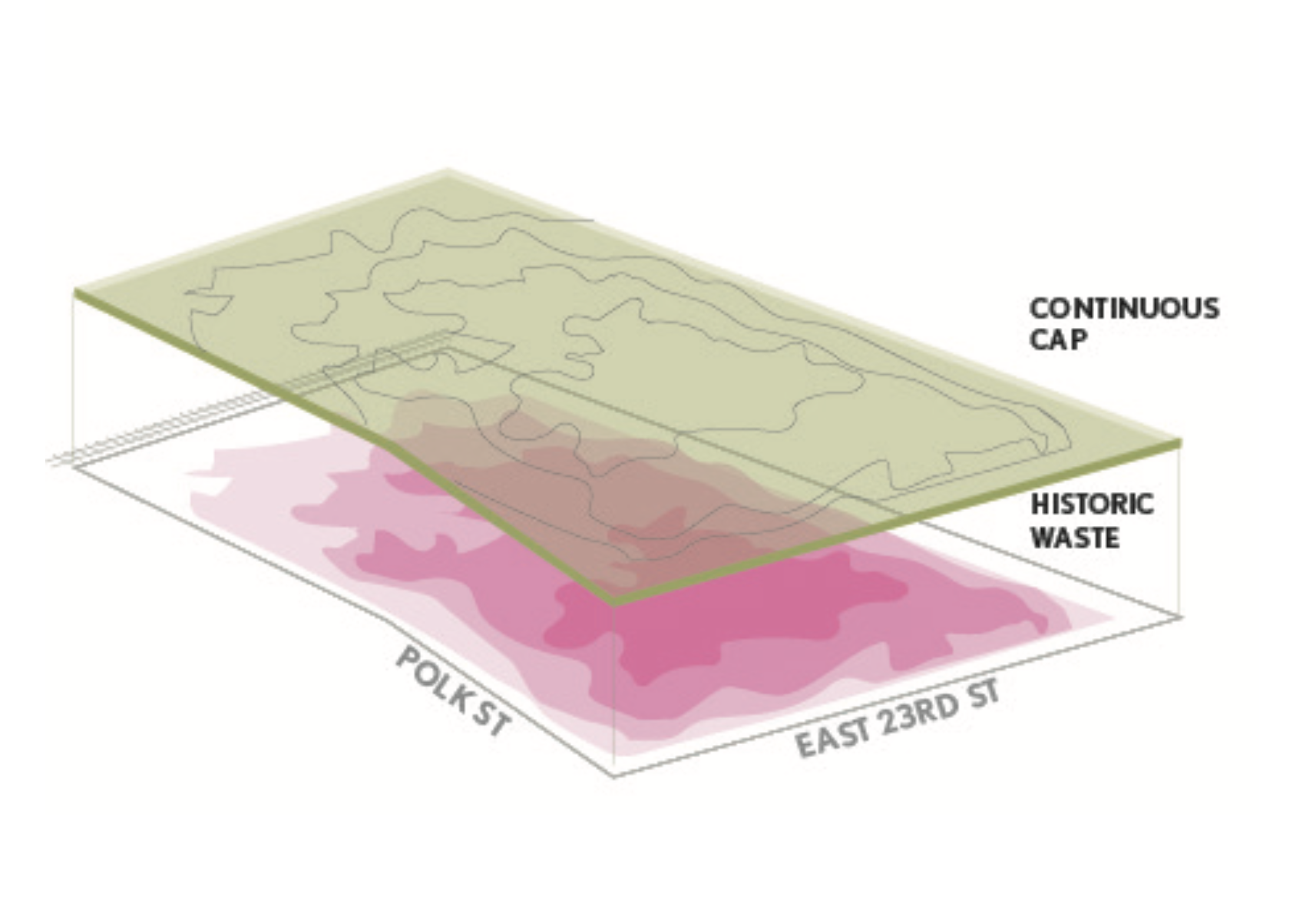
Montague Park’s Brownfield Timeline
1940’s - 1960’s
As the site now known as Montague Park was originally low-lying and swampy, it languished for decades as raising the land would be required for practical use, and raising 45+ acres is no small task. In the 1940’s, City Commissioner and future mayor P.R. Olgiati thought that he found an easy solution to two pressing issues at the time, finding much needed landfill space in the City, and raising the ground level of Montague Park by designating the land as a temporary landfill to be eventually capped and finally find use as a park.
From 1948 to about 1968, the site was used as an unregulated, uncontrolled municipal dump. Quantity and nature of material are unknown but it is believed that waste from adjacent chemical and textile plants as well as other industries were dumped here. Once the landfill operations ceased, the waste was capped and an outdoor recreation center was built above.
1980’s
In what had seemed like a win-win in the 1940’s, the strategy of raising the land with refuse soon proved to not be such a great solution decades later. In less than two decades of use, the site’s sordid past came back to haunt the City, rising from the depths, mostly in the form of methane gas.
In 1984, environmental investigations led to the site being deemed a “potential hazardous waste site” and referred to the Tennessee Division of Superfund for further evaluation. Five years later in 1989, the NUS Corporation conducted a Site Screening Investigation (SSI) report including exposure pathways, surface and subsurface soil sampling, and concluded that no further remedial action was planned.
1990’s
Despite concerns, activities at Montague Park carried on in the following couple of decades as officials continued to monitor the environmental conditions.
Associated Environmental Services Inc. performed limited sampling based upon the proposed continued use of the site as a public park/ The Investigation of Immediate Site Hazards report identified barium and lead above background concentrations, organics, and PAHs in the upper 3” of soil sampled. The risk assessment identified no unusual risks at Montague Park.
2000’s
Although previous assessments has identified “no unusual risks at Montague Park,” The City took the initiative to close the park after more than three decades as home to the City’s youth and recreational softball and baseball leagues.
In 2003, TDEC performed borings to check cap thickness and monitor for methane gas with tests to a depth of 3’. In 2006, Notice of Land Use Regulation (NLUR) restricted intrusive activities and groundwater use.
2010’s - Today
As it had back in its early decades before the landfill project, the Park’s site sat abandoned and nearly forgotten for years following its closure in 2003. Throughout this time, the site continued to be monitored and remediated with new ideas for uses imagined.
Following another study in 2011, The cap was deemed to be insufficient in some areas. Additional capping was installed in the form of 24” of clay topped with 12” of vegetated cover in the areas deemed deficient. Once the cap was fixed, the site was reopened once more to the public in 2012 as a rugby pitch was installed on the south end of the park where baseball and softball diamonds once stood. In 2013, John Henry began work on the northern portion of the park to bring in additional soil to create the rolling berms atop the cap that the park is known for today.





